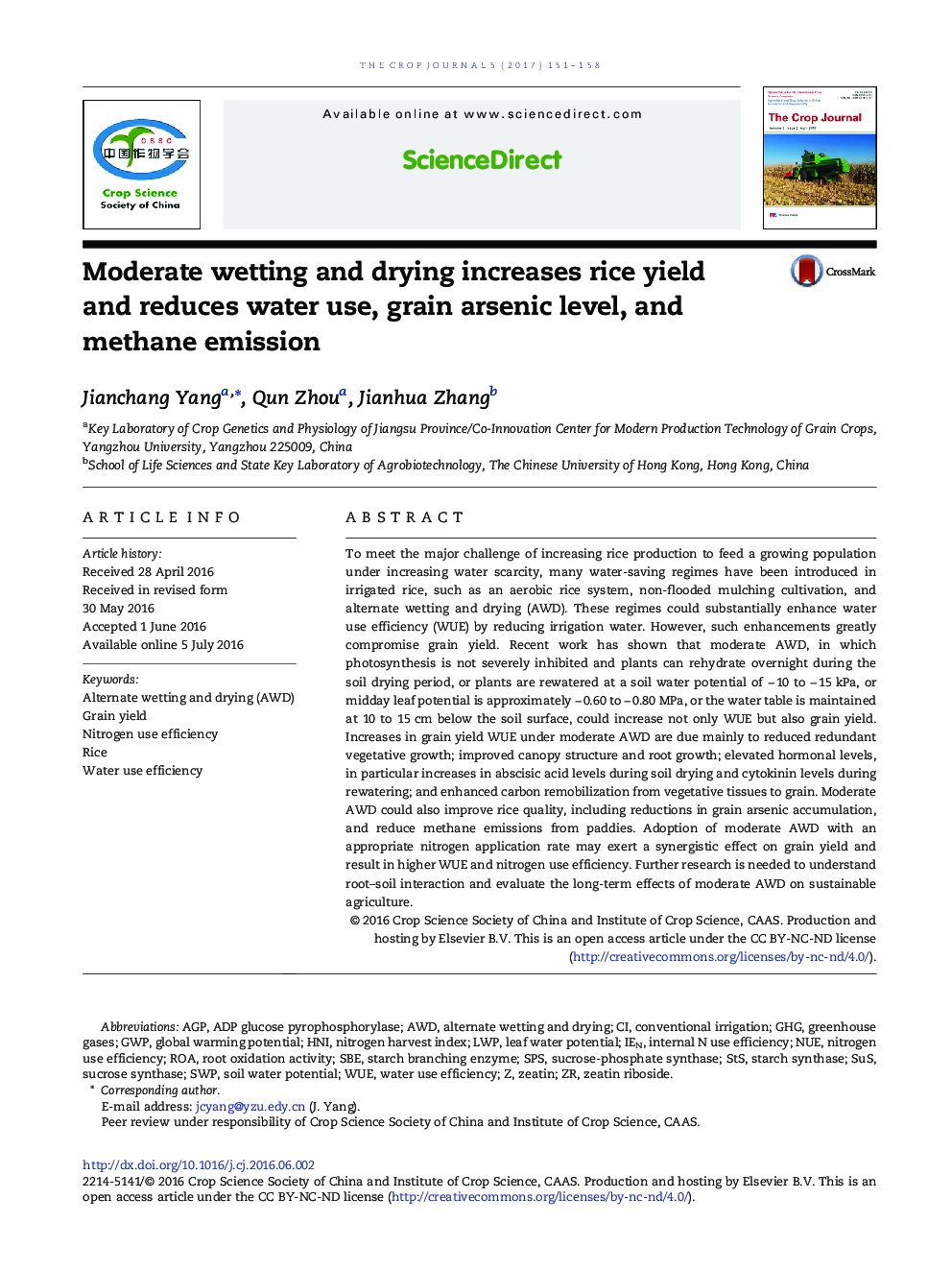| Article ID | Journal | Published Year | Pages | File Type |
|---|---|---|---|---|
| 5520817 | The Crop Journal | 2017 | 8 Pages |
To meet the major challenge of increasing rice production to feed a growing population under increasing water scarcity, many water-saving regimes have been introduced in irrigated rice, such as an aerobic rice system, non-flooded mulching cultivation, and alternate wetting and drying (AWD). These regimes could substantially enhance water use efficiency (WUE) by reducing irrigation water. However, such enhancements greatly compromise grain yield. Recent work has shown that moderate AWD, in which photosynthesis is not severely inhibited and plants can rehydrate overnight during the soil drying period, or plants are rewatered at a soil water potential of â 10 to â 15 kPa, or midday leaf potential is approximately â 0.60 to â 0.80 MPa, or the water table is maintained at 10 to 15 cm below the soil surface, could increase not only WUE but also grain yield. Increases in grain yield WUE under moderate AWD are due mainly to reduced redundant vegetative growth; improved canopy structure and root growth; elevated hormonal levels, in particular increases in abscisic acid levels during soil drying and cytokinin levels during rewatering; and enhanced carbon remobilization from vegetative tissues to grain. Moderate AWD could also improve rice quality, including reductions in grain arsenic accumulation, and reduce methane emissions from paddies. Adoption of moderate AWD with an appropriate nitrogen application rate may exert a synergistic effect on grain yield and result in higher WUE and nitrogen use efficiency. Further research is needed to understand root-soil interaction and evaluate the long-term effects of moderate AWD on sustainable agriculture.
